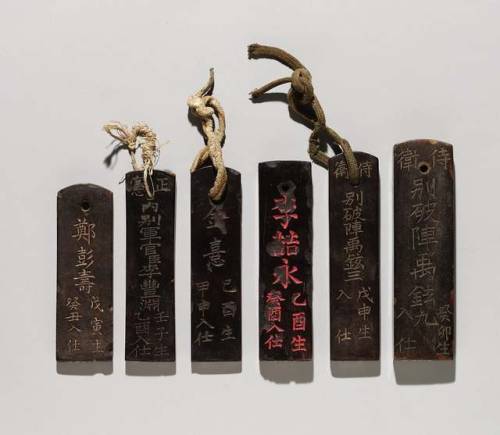
Name tags (in Korean: hopae) were, at times, legally required for all adult males under the Joseon government. First introduced in 1413 by King Taejong they were apparently modeled after a similar system under the contemporary Yuan Dynasty. Hopae were required on and off until the early 1600s, usually when the government saw the need to control internal migration. The tags are made of wood or horn, and showed the man’s name plus other required identification. Some also included rank and permissions.
These particular tags belonged to soldiers. They list the soldiers’ name, year of birth, year of entering service, position, and place of residence/troop. The last two on the right were for two brothers, both cannoneers (別破陣).